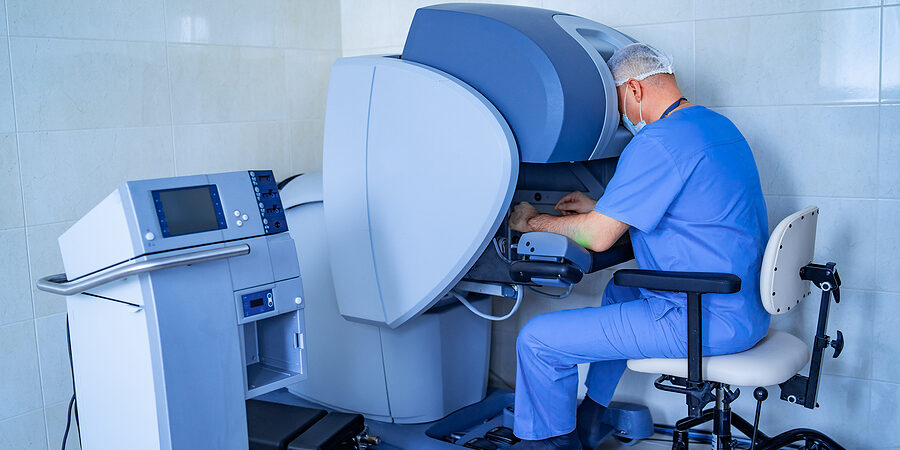Sometimes referred to as minimally invasive surgery or keyhole surgery, laparoscopic surgical procedures are typically performed issuing small incisions of around 0.5 to 1.5 cm that can be made away from the surgical site.
Surgeons, increasingly assisted by robotics as the technology develops, use small, thin surgical instruments that can be passed through the incision and threaded through to the operational site. The procedure is carried out using a laparoscope, a small tube with a camera at the tip that relays images to a monitor in the operating theatre.
Laparoscopic surgery is commonly used in the diagnosis of a wide range of abdominal and pelvic conditions. It is also widely used to carry out surgical procedures such as the removal of diseased or damaged tissue and biopsies.
The procedure is most commonly used in the study and treatment of the female reproductive system (gynaecology), followed by conditions of the digestive system (gastroenterology) and conditions affecting the urinary system (urology).
The main advantages of laparoscopic surgery over traditional open surgery are described below:
- Laparoscopic procedures often require a shorter hospital stay than traditional open surgery
- Patients also experience less pain and bleeding after surgery
- As the incision wound is so much smaller than the large incision made in traditional open surgery, post-surgical scarring is significantly reduced.
The main procedure typically involves the following steps:
- A patient is given a general anaesthetic.
- One or more small incisions are made in the abdomen, usually around the belly button area.
- A tube is inserted at the incision site and the abdomen is inflated with carbon dioxide gas. This allows the surgeon a better view of the internal organs, as well as more room to work. The laparoscope is inserted through the tube and images of the internal structures are relayed to the TV monitor.
- Surgical instruments can then be inserted via further small incisions that can be made, depending on what the surgeon finds and what procedures they need to perform.
- Once the operation is finished, the gas is expelled from the abdomen and the incision is closed using stitches.
If you’re looking for a laparoscopic surgeon in London, get in touch today,
